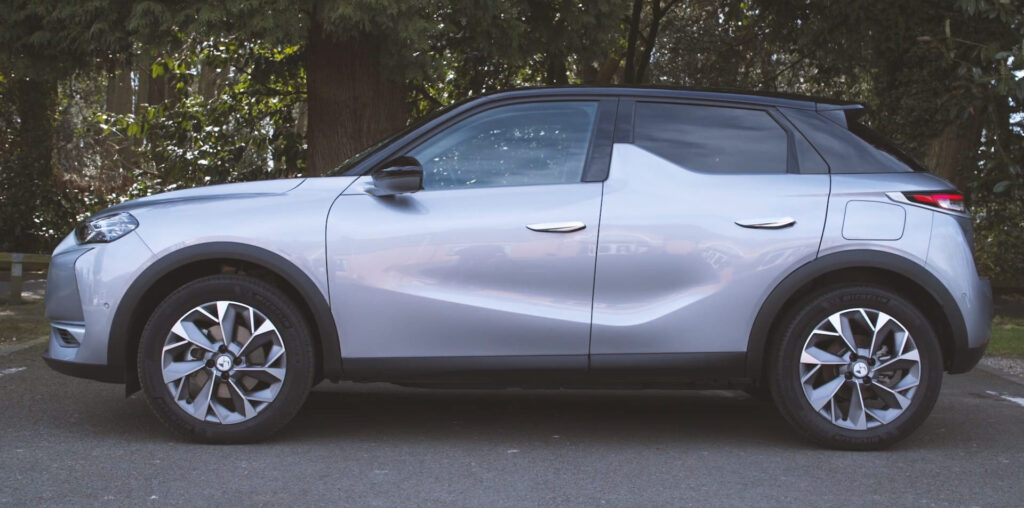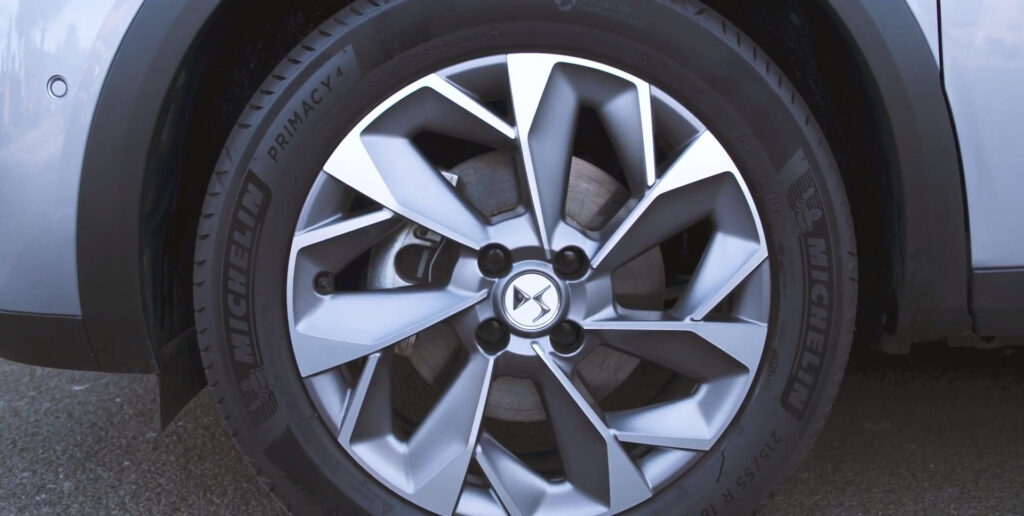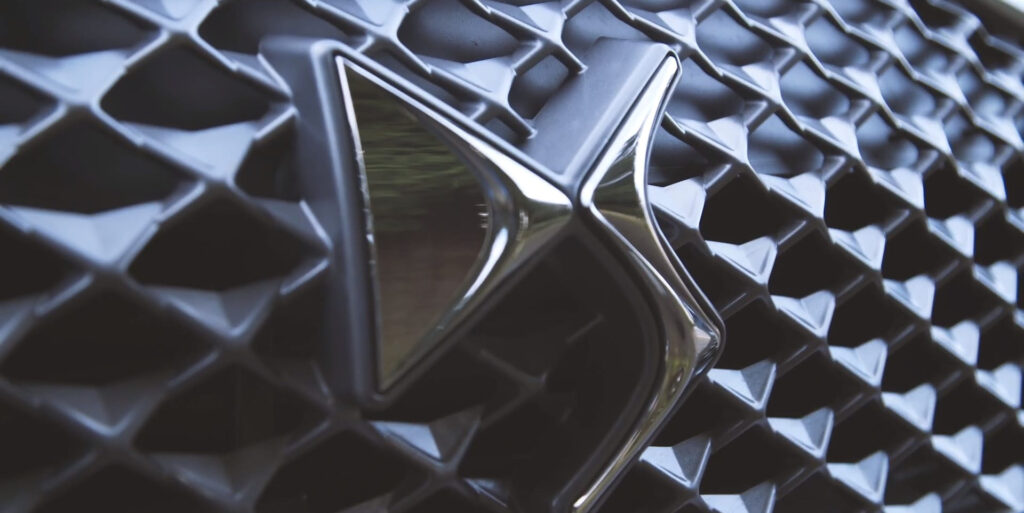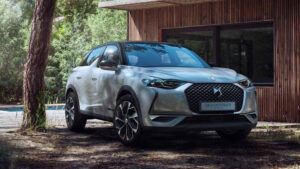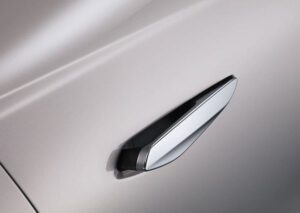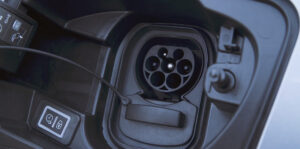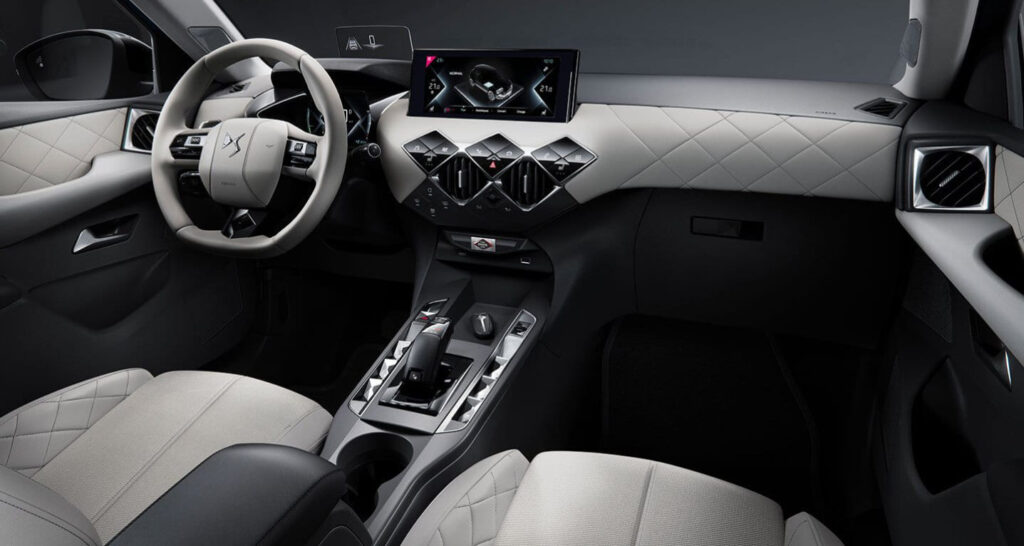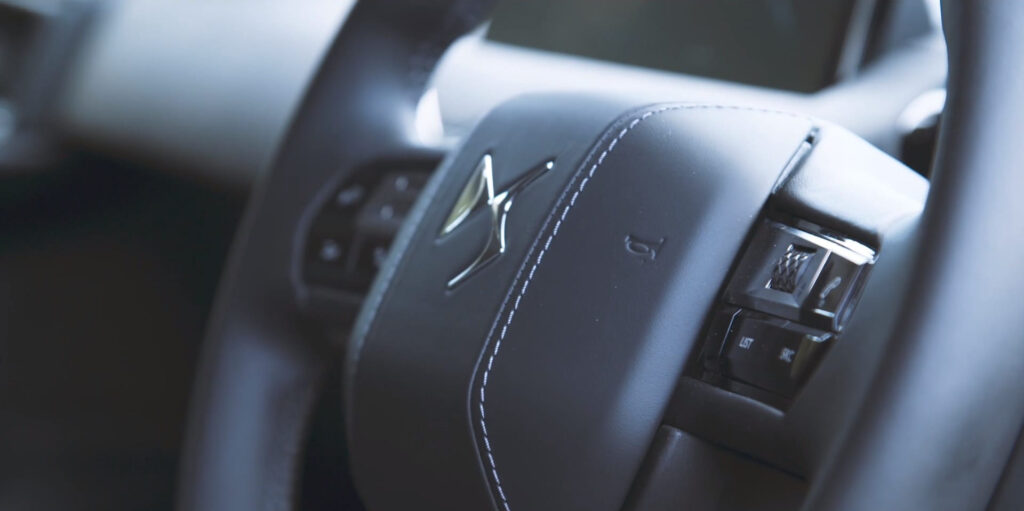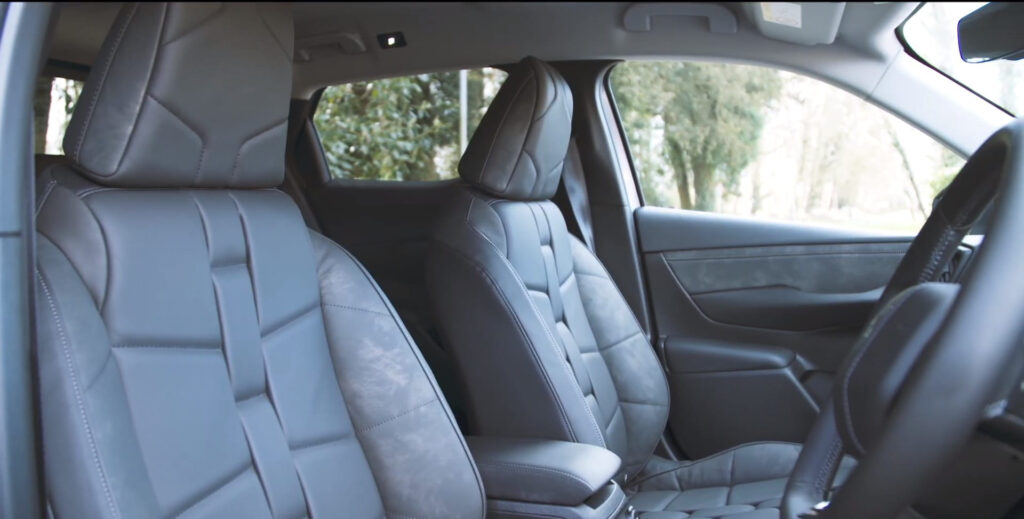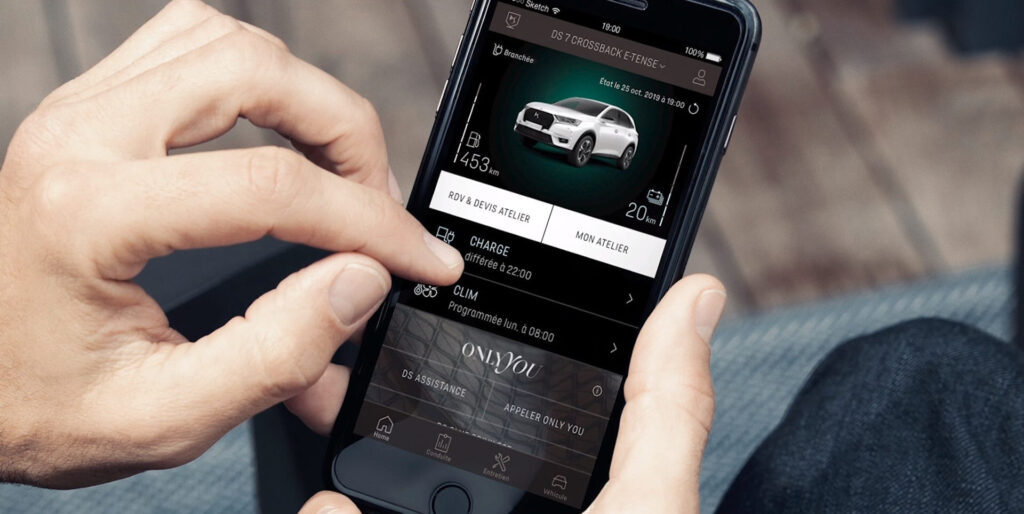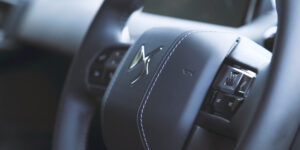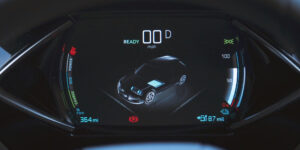DS 3 Crossback E-Tense
The DS 3 Crossback E-Tense is an all-electric SUV produced by the French luxury car brand DS Automobiles. It is powered by a 100 kW electric motor and 260 Nm of torque, providing a smooth and responsive driving experience. The car has a range of up to 250 km on a single charge, making it a practical option for both city and long-distance driving.

The interior of the DS 3 Crossback E-Tense is stylish and modern, with a 10.3-inch digital dashboard and a 10.3-inch touchscreen infotainment system that supports Apple CarPlay and Android Auto. The car is also equipped with a number of advanced safety features, including lane departure warning, adaptive cruise control, and automatic emergency braking.
The car’s exterior has a sleek and dynamic style, with a distinctive grille and LED headlights. The car also comes with a number of customizable options that allow buyers to personalize the look of their vehicle.

Overall, the DS 3 Crossback E-Tense is a stylish and practical electric SUV that offers a number of advanced features and plenty of range. It’s a great choice for drivers looking for a premium electric vehicle that offers both style and functionality.
| Performance | |
| Acceleration 0 – 100 km/h | 8.7 sec |
| Top Speed | 150 km/h |
| Electric Range | 250 km |
| Total Power | 100 kW (136 PS) |
| Total Torque | 260 Nm |
| Drive | Front |
| Battery and Charging | |
| Battery Capacity | 50.0 kWh |
| Battery Useable* | 45.0 kWh |
| Europe | |
| Charge Port | Type 2 |
| Port Location | Left Side – Rear |
| Charge Power | 7.4 kW AC |
| Charge Time (0->250 km) | 7h15m |
| Charge Speed | 35 km/h |
| Fastcharge Port | CCS |
| FC Port Location | Left Side – Rear |
| Fastcharge Power (max) | 99 kW DC |
| Fastcharge Time (25->200 km) | 31 min |
| Fastcharge Speed | 330 km/h |
| Energy Consumption | |
| EVDB Real Range | |
| Range | 250 km |
| Vehicle Consumption | 180 Wh/km |
| CO2 Emissions | 0 g/km |
| Vehicle Fuel Equivalent | 2.0 l/100km |
| NEDC Ratings | |
| Range | 450 km |
| Rated Consumption | No Data |
| Vehicle Consumption | 100 Wh/km |
| CO2 Emissions | 0 g/km |
| Rated Fuel Equivalent | No Data |
| Vehicle Fuel Equivalent | 1.1 l/100km |
| WLTP Ratings | |
| Range | 320 km |
| Rated Consumption | 176 Wh/km |
| Vehicle Consumption | 141 Wh/km |
| CO2 Emissions | 0 g/km |
| Rated Fuel Equivalent | 2.0 l/100km |
| Vehicle Fuel Equivalent | 1.6 l/100km |
|
Rated = official figures as published by manufacturer. Rated consumption and fuel equivalency figures include charging losses.
|
|
|
Vehicle = calculated battery energy consumption used by the vehicle for propulsion and on-board systems.
|
|
| Real Energy Consumption between 120 – 257 Wh/km | |
| City – Cold Weather | 180 Wh/km |
| Highway – Cold Weather | 257 Wh/km |
| Combined – Cold Weather | 214 Wh/km |
| City – Mild Weather | 120 Wh/km |
| Highway – Mild Weather | 200 Wh/km |
| Combined – Mild Weather | 158 Wh/km |
|
Energy use for each trip will vary considerably depending on the driver and the conditions. Therefore, we have provided a range of estimates which can be useful in developing an understanding of the potential benefits of this technology. |
|
| Dimensions and Weight | |
| Length | 4118 mm |
| Width | 1802 mm |
| Width with mirrors | No Data |
| Height | 1534 mm |
| Wheelbase | 2558 mm |
| Weight Unladen (EU) | 1598 kg |
| Gross Vehicle Weight (GVWR) | 1975 kg |
| Max. Payload | 452 kg |
| Cargo Volume | 350 L |
| Cargo Volume Max | 1050 L |
| Cargo Volume Frunk | No Data |
| Roof Load | No Data |
| Tow Hitch Possible | No Data |
| Towing Weight Unbraked | 0 kg |
| Towing Weight Braked | 0 kg |
| Vertical Load Max | No Data |
| Miscellaneous | |
| Seats | 5 people |
| Isofix | No Data |
| Turning Circle | No Data |
| Platform | PSA eCMP |
| Car Body | SUV |
| Segment | JB – Small |
| Roof Rails | No Data |
| EV Dedicated Platform | No |
Home and Destination Charging (0 -> 100%)
A public charging station is required to use the highest possible charging rate. The EVSE/charging station’s charging capacity affects how long it takes to fully charge the battery. The table below shows all possible options for fully charging the BMW i3s.
In Europe, plugging an electric car into an outlet is often as easy as plugging it into a household outlet, but there are differences from country to country. The table below shows the different ways to charge the BMW i3s, but in some countries some chargers may not be available.
Type 2 ( IEC 62196)

| Charging Point | Max. Power | Power | Time | Rate |
| Standard 7.4 kW On-Board Charger | ||||
| Wall Plug (2.3 kW) | 230V / 1x10A | 2.3 kW | 23h15m | 11 km/h |
| 1-phase 16A (3.7 kW) | 230V / 1x16A | 3.7 kW | 14h30m | 17 km/h |
| 1-phase 32A (7.4 kW) | 230V / 1x32A | 7.4 kW | 7h15m | 34 km/h |
| 3-phase 16A (11 kW) | 230V / 1x16A | 3.7 kW | 14h30m | 17 km/h |
| 3-phase 32A (22 kW) | 230V / 1x32A | 7.4 kW | 7h15m | 34 km/h |
| Optional 11.0kW On-Board Charger | ||||
| Wall Plug (2.3 kW) | 230V / 1x10A | 2.3 kW | 23h15m | 11 km/h |
| 1-phase 16A (3.7 kW) | 230V / 1x16A | 3.7 kW | 14h30m | 17 km/h |
| 1-phase 32A (7.4 kW) | 230V / 1x32A | 7.4 kW | 7h15m | 34 km/h |
| 3-phase 16A (11 kW) | 400V / 3x16A | 11 kW | 5 hours | 50 km/h |
| 3-phase 32A (22 kW) | 400V / 3x16A | 11 kW | 5 hours | 50 km/h |
Fast Charging (10 -> 80%)
If you want to enjoy driving an electric car, one of the most important features to consider is the number of miles per hour the car can travel while charged. This is called the “range” of the car. All electric cars have a certain range, even if they are 100% charged. This is because they do not have an internal combustion engine to lean on if you need to drive a long distance.
Max. Power: The maximum power provided by the charging point
Avg. Power: The average power provided by the charging point during a session of 10% to 80%.
Time: the time it takes to charge from 10% to 80%
Speed: the average charging rate during the session of 10% to 80%
Combined Charging System (CCS Combo 2)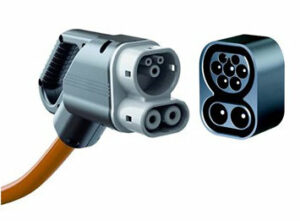
| Charging Point | Max. Power | Avg. Power | Time | Rate |
| CCS (50 kW DC) | 50 kW | 46 kW | 43 min | 240 km/h |
| CCS (175 kW DC) | 99 kW | 65 kW | 31 min | 330 km/h |
| CCS (350 kW DC) | 99 kW | 65 kW | 31 min | 330 km/h |
| Brand | DS |
| Model | 3 Crossback E-Tense |
| Body Style | SUV |
| Car Engine | electric |
| Motor power | 100 |
| Maximum Torque, Nm | 260 |
| Battery Energy, kWh | 50.0 |
| Power reserve (NEDC/EPA/WLTP), km | - / - / 250 |
| Level Charging (230/400/DC), hours | - / 5 / 0.31 |
| Electrical Acceleration, 0-100 km/h (0-62.1 mph) in sec | 8.7 |
| Top Speed, km/h | 150 |

